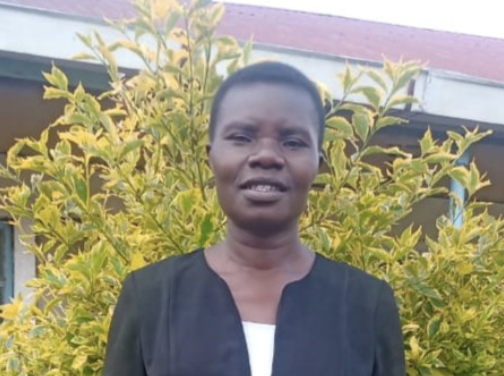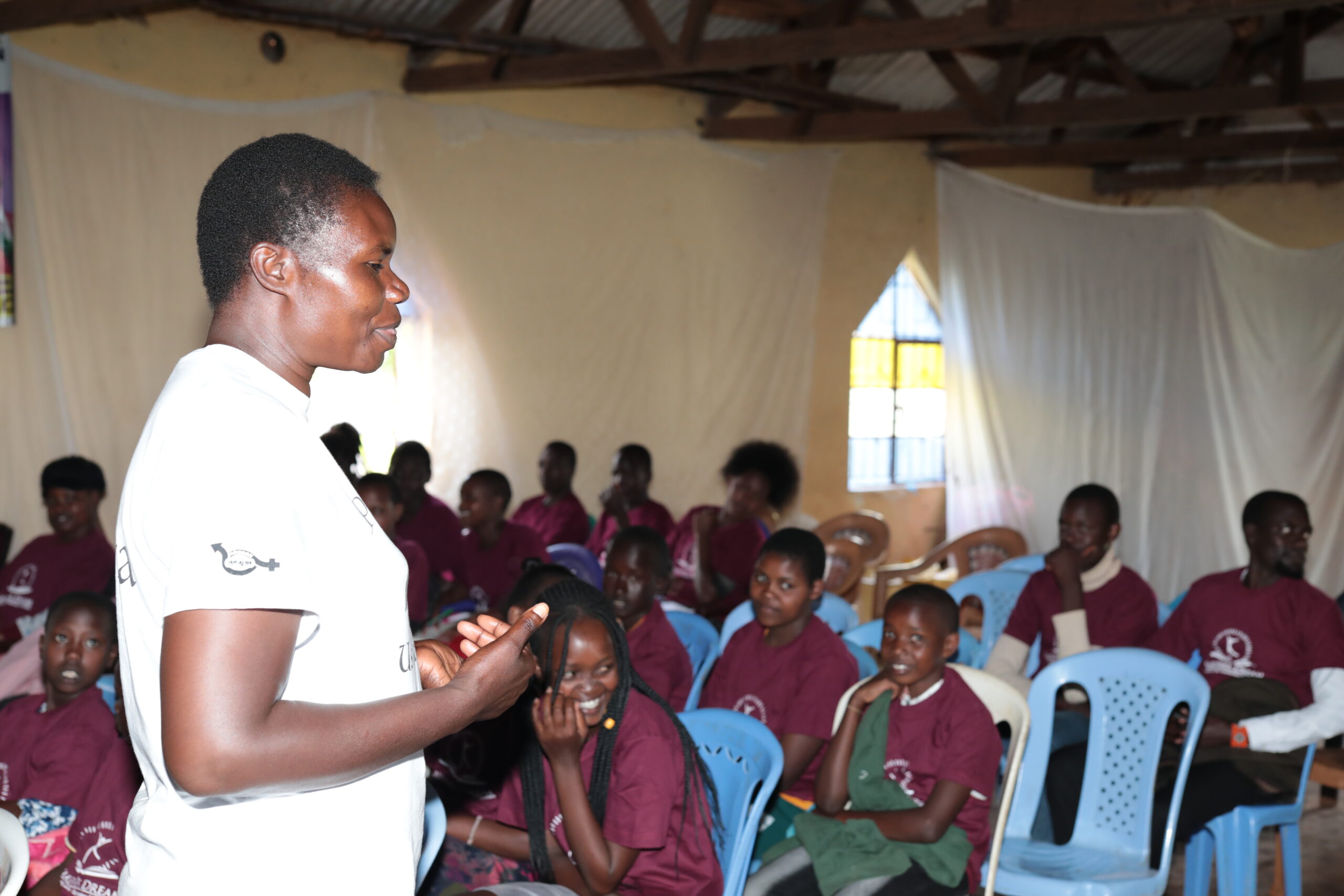At Kakenya’s Dream, we’re on a mission to end harmful cultural practices, like child marriage and female genital mutilation (FGM), that violate girls’ rights and undermine their access to education. But these issues are extremely sensitive and can be difficult to talk about. So how do we go about addressing these topics with the communities we serve? What does it take to change public opinion about these harmful yet prevalent practices? How do we know whether we are successful?
To shed light on the answers to these questions, we interviewed community dialogue expert, Carolyn Ojwaya.
Carolyn is a teacher in a neighboring community in Narok County and has been advancing our mission and programs at Kakenya’s Dream since our inception. As a facilitator for both our Linda Dada campaign and Health and Leadership Training program, Carolyn visits different communities across the region to engage them in dialogue on women’s rights issues.
The workshops Carolyn facilitates cover a comprehensive range of topics, from gender inequality, to healthy relationships, and sexual and reproductive rights under Kenyan law. Carolyn shares how transforming attitudes and bringing about changes in cultural norms involves both listening and collaborative problem solving.

Of the topics covered in our health programs, which do you believe are most important?
The programs seek to address a wide range of issues, but the most pertinent are teen pregnancy, child marriage, and FGM.
How do you start conversations about these issues with youth and other community members?
We have separate workshops where we talk to parents and youth.
Let me begin with a session where we talk to youth. First, you do an informal needs analysis. How do I do that? I introduce myself as a facilitator, and then I tell them, “I came so that we can dialogue together. You know the issues that are affecting you. You know the challenges that you are going through. Would you mind sharing with me some of those challenges?”
When they start mentioning their challenges, I compare them with what we want to teach them. If, for example, they mention teenage pregnancy as a challenge, then I know we are reading from the same script and now it is easy to get into it.
For the parents, one thing you need to do is break the ice. And then from there, you find that some are receptive and some are a bit rigid.
What do you do if you find the community is reluctant to the change you are advocating for?
Let me give you an example. There was a time I ran into a hostile crowd. This is what I did: I introduced myself and I told them “I’m here so that we can talk.” I told them I had three questions for them: I asked how many of them have daughters who have studied up to eighth grade. There were about three or four. Then I asked how many have girls who have studied up to their senior year of high school. There were none. I asked how many have girls who have made it up to the university level. None.
Then I asked them, “suppose I now need a nurse to employ in this community, can you give me the name of one girl so that she’s employed?” And there were none, and they started wondering and looking at each other. So I asked them why their girls are not accessing education. And they started opening up and telling me the reasons. Now, from that session, we could begin coming up with solutions.
How do you ensure people are comfortable talking about such issues?
You provide a conducive environment. You tell them, “you will not be intimidated. You are free and we respect your opinion.” They must see that. Establishing a rapport sometimes means you may have to share your own experiences in order to make them comfortable so that they can speak.
You shouldn’t condemn them. You shouldn’t tell them that what they are doing is wrong. But you need to find a way to navigate the conversation so that they will come to the realization on their own that whatever we’re doing is not the right thing. That is what we seek most – to get them to come around and change their perception and attitude. Then the change comes from within, instead of me saying they are wrong.
What solutions have you developed together with the community to address issues like teenage pregnancy, child marriage, and FGM?
“An effective solution should always come from the community themselves. Because when they come up with the solution, when they participate in the formulation of these solutions, they own it.”
Carolyn gives the example of community members beginning to report to girls’ schools and the authorities when a girl has been married off and forced to leave school. In the past, schools often weren’t aware of why girls didn’t return to class, and it’s possible that nobody would have gone out to inquire about her because of the sheer prevalence of school drop-out for girls. But now, Carolyn says, “they notice and will come and report to the school, ‘we had this girl in this class but she has been married off. Can you assist us to bring this girl back to school?’ So you find that it is they themselves who are now reporting cases of child marriage, who are now reporting cases of FGM, who are now reporting cases of pregnant girls who have given birth and have not had an opportunity to come back to school. Once they have been sensitized and we have created awareness, communities do come up with home-grown solutions.”
Have you observed behavior change as a result of our programs?
Yes. One of the indicators is the number of girls who are now accessing secondary [high school] education. Initially, you’d find that only a few girls would go beyond eighth grade. When we started, I can remember there were very few girls’ schools, but 10 years down the road the number of girls’ schools has increased and that points toward a positive behavior change. it means more girls are accessing education.
We are also looking at the number of girls who are dropping out of school due to teen pregnancies. When we go to visit these schools, we ask them how our programs have impacted them. They tell us, for example, “we only have four girls who are pregnant compared to previous years where we had 15 to 20 girls who got pregnant.” So when we get that data from partner schools, we begin to realize that teenage pregnancy is on the decline. But I do want to say that during the COVID-19 period, it reversed some of the gains we had made with teenage pregnancies….and this is why we came up with the Linda Dada campaign and its slogan “education first, pregnancy later.”
What is your personal motivation for working with Kakenya’s Dream?
I’m passionate about girls’ education. I love assisting girls to achieve their dreams. I love seeing them live their life to the fullest.
I believe that educating the girl is educating the community. There are so many girls [who have gone through Kakenya’s Dream programs] giving back to the community now. They come back as role models. For example, we have girls who are now in universities nationwide. We invite them home to share their experiences and they tell those who we are currently mentoring, “I was just like you, and look here I am, I’m pursuing my dreams.” Especially now, we have role models from the Maasai community who have excelled, so [younger generations] are able to resonate with their messages because they are looking up to one of their own.

